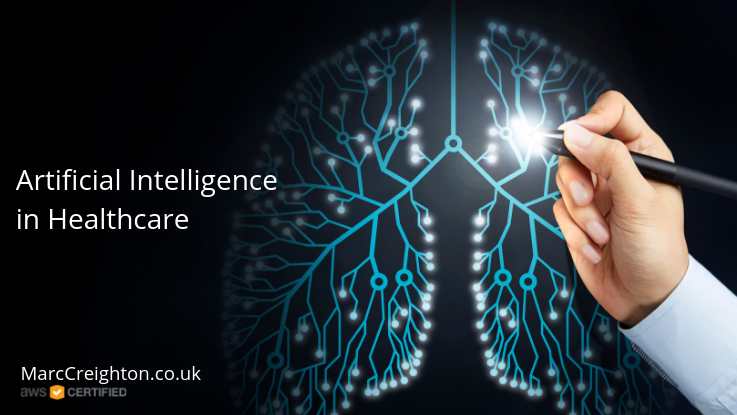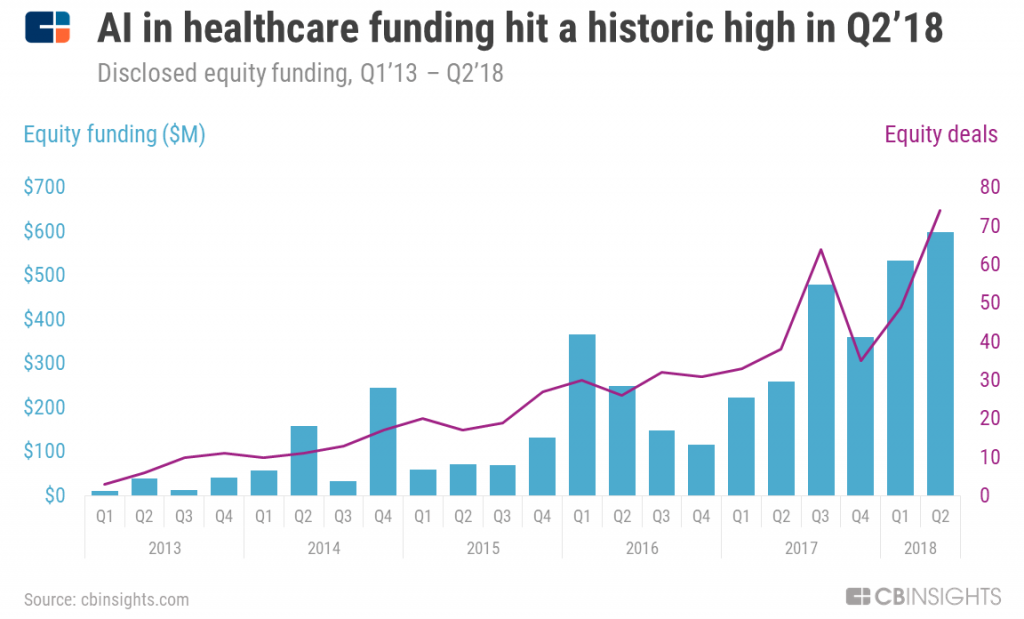
Despite several false dawns in the past Artificial intelligence (AI) and machine learning are perhaps the most critical innovations for healthcare in the 21st-century. The importance of these two outcomes is defined by the fact that almost every sector in the world is actively seeking to incorporate them.
What is Artificial Intelligence?
Artificial intelligence refers to the capacity of a computer to mimic human behaviour. Artificial intelligence entails a computer performing tasks that typically require human intellect, including decision-making, speech recognition, translation between languages, and visual perception.
What is Machine Learning?
Machine learning (ML) is a subset of Artificial Intelligence and usually entails computerised device learning from knowledge graphs (a data set). The health sector and in particular, the NHS is one area that will benefit from the integration of AI and machine learning, given that patient and clinician outcomes will improve exponentially.
The Benefits of Artificial Intelligence in Healthcare
Artificial Intelligence in Clinic Scheduling
One area that AI and machine learning will improve is clinic management. As such, AI and machine learning will indispensably help with efficiency around clinic scheduling. Fundamentally, AI and machine learning will allow for the optimisation of the doctors’ time slots. To accomplish this outcome, as identified by Robichaud (2018), AI and machine learning will provide the physicians with suggestions on how they should prepare their schedule so that they can meet the patients’ needs in line with the reality of their medical institution.
What is more, Robichaud (2018) claims that the AI and machine learning will update data in real-time, hence adjust its calculations, thereby generating suggestions for the doctor at a rapid pace. What this means is that, regardless of how complex the patient’s needs might appear, the physician will arrange successful appointments much to the enthusiasm of the clients. Research has shown that when a patient has a positive attitude towards the care delivery process, he or she is likely to endure a faster recovery process.
Clinical Diagnosis and Artificial Intelligence
Another area that will inevitably benefit from the application of AI and machine learning within the healthcare sphere is a clinical diagnosis. AI and machine learning can identify trends or patterns in patients’ symptoms to form a likely diagnosis. Sennaar (2019) gives the example of chatbots; these AI/Machine learning devices have speech recognition. Consequently, chatbots can identify the signs of a disorder based on a targeted conversation between the client and the bot.
In addition to this, Sennaar (2019) claims that AI and machine learning has great potential within the oncology department. The author identifies that researchers in the UK are now employing the use of deep learning to train algorithms aimed at distinguishing cancerous tissues. Sennaar (2019) also supposes that AI and machine learning has the potential to diagnose diseases by analysing urine and blood, among other bodily fluids.
Indeed, given the underlying proficiency, AI and machine learning can help the physician to visualise the pathology of a disease with a higher level of accuracy when compared to the case of conventional devices, for example, microscopes.
Research with Artificial Intelligence
Research has also manifested that experts have used AI and machine learning in the UK to diagnose rare diseases successfully. Sennaar (2019) relates that experts are now combining facial recognition software with machine learning to assist the clinicians in detecting the presence of rare disease. The software analyses patient photos by utilising the facial analysis function and then applies deep learning aiming to identify phenotypes, which share vivid correlations with rare genetic diseases.
Artificial Intelligence and Image Recognition
The other area that will benefit from the application of AI and machine learning in the healthcare domain is image recognition. Pesapane, Sardanelli, and Codari (2018) identify that radiologists in the UK are already enjoying the fruits of medical imaging. Central to this technology is the use of magnetic resonance imaging along with computed tomography. Besides, AI and machine learning involve AI algorithms looking at clinical or medical images aiming to identify patterns that imply a disorder. While this is the case, for the AI and machine learning to perform this action, experts have to train them by utilising various images and examinations. Pesapane, Sardanelli, and Codari (2018) reveal that, with appropriate training, AI and machine learning will succeed in providing information concerning the attribution of abnormal findings. The portrayal is often in terms of conditional probabilities that the physicians can apply when using the Bayesian decision-making model.

Conclusion
It is evident that AI and machine learning has great potential for the healthcare industry. Based on this discussion, AI and machine learning are affecting and will continue to affect three core areas. These include clinical management, clinical diagnosis, and image recognition.
Concerning clinical management, the use of AI and machine learning will increase the efficiency in clinical scheduling and ultimately, patient satisfaction.
In clinical diagnosis, it is undeniable that AI and machine learning are recognising patterns and trends, which predict the presence of a disease. When it comes to image recognition, AI and machine learning will use AI algorithms to assess clinical or medical images hence identifying patterns that imply a disorder or disease.
Amazon Web Services (AWS) are a market leader in AI and ML, find out how I can help you get started on AWS.




Leave a Reply